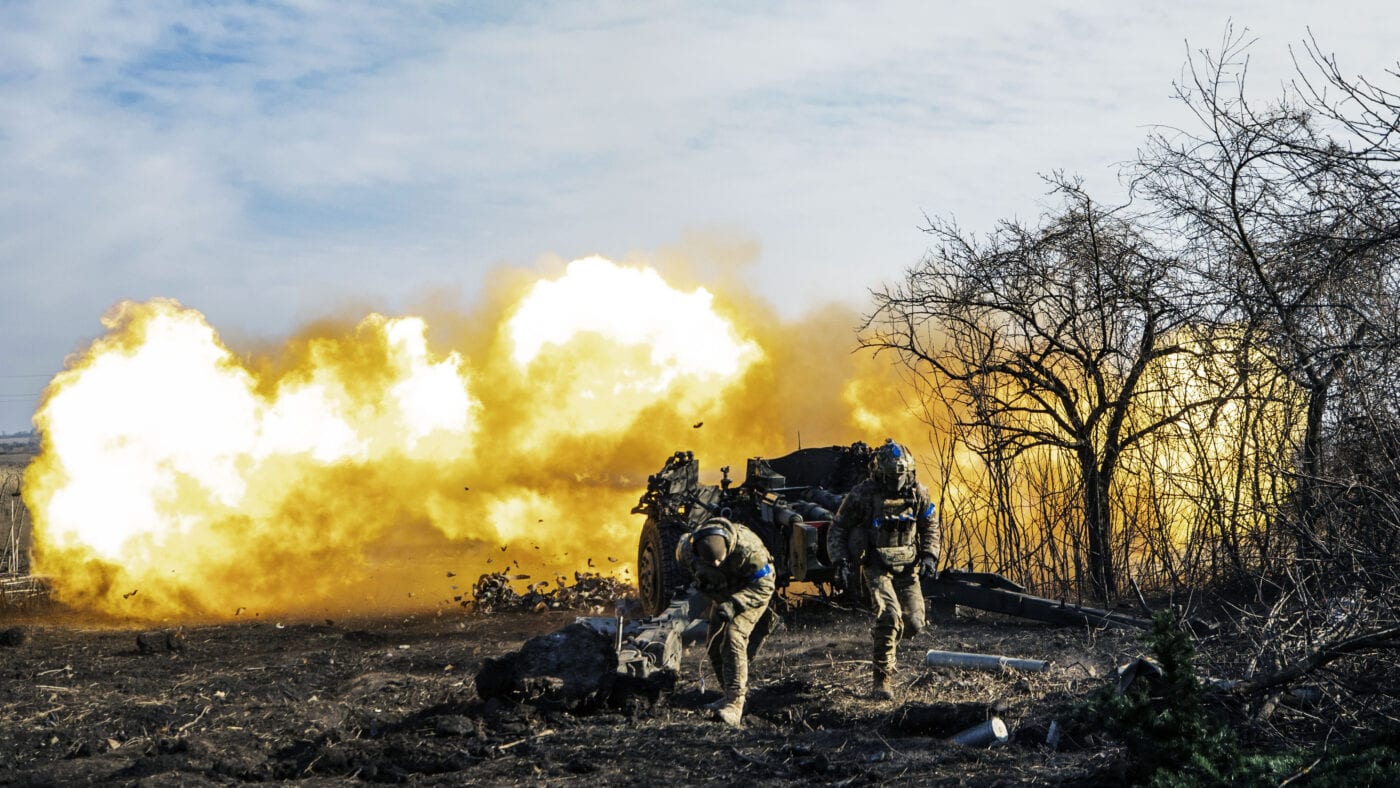‘Range anxiety‘ is a phrase most often associated with electric vehicles having to regularly charge their batteries. But it is also central to an understanding of the protracted nature of the limited war being fought between Russia and Ukraine. Range in this case means something different, of course. It is the limited distance at which Ukraine can strike Russian military targets that is effectively imposed on Kyiv by the weaponry supplied by Ukraine’s Western allies.
The willingness of Kyiv’s allies to supply ever more sophisticated military aid has evolved over the year. Initially, Western aid to Ukraine was limited to Manpad air defence systems and handheld anti-tank weapons. But this has gradually been extended to include sophisticated air defence systems, armoured fighting vehicles and the promise of main battle tanks such as US Abrams, German Leopard 2 and British Challengers.
The gradual increase in the scope and lethality of armaments supplied by the West to Ukraine has always been preceded by much agonising over the desire to aid Ukraine while avoiding the escalation of the conflict – either geographically to involve Nato itself or Moscow’s use of nuclear weapons.
For this reason, supplies of military aid have been incremental and hesitant – at least from Kyiv’s perspective. It has also come with the condition attached that Western weapons cannot be used by Ukraine against Russian territory. There is an understandable fear, given Moscow’s repeated threats, that the Russians would view this as Western entry into the war.
Western fears
US sensitivity on this subject was evident when US secretary of state, Antony Blinken, responded to the Ukrainian drone attack air bases hundreds of kilometres into Russian territory by stating: ‘We have neither encouraged nor enabled the Ukrainians to strike inside of Russia.’ This concern explains the continued US reluctance to supply the longest-range rockets that are compatible with its High Mobility Artillery Rocket System (Himars) such as the much-requested ATACMS (Army Tactical Missile System).
Range anxiety also partly explains US reluctance to supply Ukraine with advanced fighter jets such as the F16. Due to the effectiveness of the Ukraine ground-based air defence network – a combination of Soviet-era surface-to-air systems (Sams) and Western equipment, Russian aircraft have mostly been forced to launch their attacks on Ukraine from inside their own airspace
While this has largely limited their operations to eastern Ukraine, they have augmented their arsenal with longer-range Iranian “kamikaze” drones in order to target Kyiv, which they did in October, damaging power infrastructure and killing several civilians.
Sending F16s to Ukraine under the same constraints as previous equipment would do little to address the Russian air threat. Air-to-air missiles operate over long distances and beyond visual sight. The Russian Mig 31 and Su 57 operating the R37M long range hypersonic missile have engaged Ukrainian aircraft at a range of over 200kms from the safety of Russian airspace.
Supplying Ukraine with F16s or other Western aircraft without giving Kyiv the authority to engage enemy aircraft over Russia would only demonstrate the one-sided nature of the current limitations under which this conflict is being fought – constraints that manifestly benefit the Russian aggressors.
Uneven playing field
At present, Russia can commit acts of barbarism from its own territory while its aircraft and their operating bases are effectively immune from retaliation or interdiction. Under these constraints, while Ukraine suffers and burns, Russian territory is a sanctuary. Given that the effects of the war are being experienced in a one-sided manner it is little wonder that Russia still believes it will prevail.
Most importantly, these constraints make it difficult to envisage how Ukraine could forcibly push Russian occupiers out of its territory if it is not allowed to use Western-supplied equipment.
These limitations partly explain why the battle lines of this conflict resemble first world war trenches and why the war has become static and protracted. Most of the fighting this far has been limited to within artillery range. Fighting at short range also gives advantage to the side that can generate the most men and equipment for an offensive, something Russia has spent the winter months preparing.
Ukraine’s pleas for main battle tanks and armoured fighting vehicles recognised the need for the capacity to manoeuvre and to fight the war on its terms. Its ability to fight the war at greater distance using greater quantities of longer-range artillery would also allow it to blunt the Russian offensive at depth attacking supply bases and command centres.
It would also allow Ukraine to cut the land bridge between Crimea and the Rostov region of Russia without the need to regain all its territory up to the sea. Cutting off Crimea in this way would be a powerful counter-punch to the Russian efforts to invade the rest of the Donbas. Isolating Crimea would starve the Russian forces there of resupply and act as a prelude for an assault.
Washington’s decision to supply Ukraine with ground-launched, small diameter bombs as part of a new US$2.17bn (£1.8bn) aid package announced by the Biden administration this month indicates an appreciation of the case for longer-range military systems. These munitions have a range of 95 miles, twice that of the systems currently provided.
But are unlikely to be available in time for the potentially decisive battles of spring 2023. For the Russian offensive to be blunted – and for Putin to be convinced that he cannot achieve his strategic objectives – either longer-range munitions need to be supplied to Ukraine in sufficient numbers, or the constraints under which the West is requiring Ukraine to fight this war need to be reconsidered.![]()
This article is republished from The Conversation under a Creative Commons license. Read the original article.
Click here to subscribe to our daily briefing – the best pieces from CapX and across the web.
CapX depends on the generosity of its readers. If you value what we do, please consider making a donation.


